1.拷贝构造函数的特性:
1.拷贝构造函数用来构造一个与已存在对象一摸一样的对象
它只有单个形参,该形参是对本类类型对象的引用(一般常用const修饰),在用已存在的类类型对象创建新对象时由编译器自动调用。
2.拷贝构造函数是构造函数的一种重载形式。
3.形参只有一个(不包括隐含的this指针),且必须是类类型对象的引用,否则会发生无限递归。
#include<iostream>
using namespace std;
class Date
{
public:
Date(int year, int month, int day)
{
_year = year;
_month = month;
_day = day;
}
Date(const Date& d)
//错误写法:Date(const Date d)
{
_year =d._year;
_month = d._month;
_day = d._day;
}
void Print()
{
cout << _year << "/" <<
_month << "/" << _day << endl;
}
private:
int _year;
int _month;
int _day;
};
int main()
{
Date d1(2024,2,6);
Date d2(d1);
d1.Print();
d2.Print();
}
错误写法会引发无限递归:
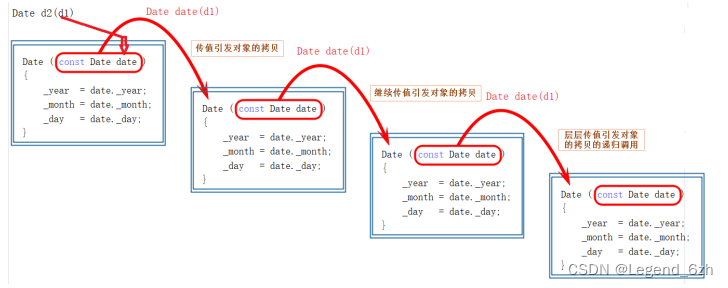
4. 若未显式定义,编译器会生成默认的拷贝构造函数。 默认的拷贝构造函数对象按内存存储按字节序完成拷贝,这种拷贝叫做浅拷贝,或者值拷贝
#include<iostream>
using namespace std;
class Time
{
public:
Time(int hour=1,int minute=1,int second=1)
{
_hour = hour;
_minute = minute;
_second = second;
cout << "Time()" << endl;
}
Time(const Time& d)
{
_hour = d._hour;
_minute = d._minute;
_second = d._second;
cout << "Time(const Time& d)" << endl;
}
private:
int _hour;
int _minute;
int _second;
};
class Date
{
private:
int _year;
int _month;
int _day;
Time _t;
};
int main()
{
Date d1;
Date d2(d1);
}
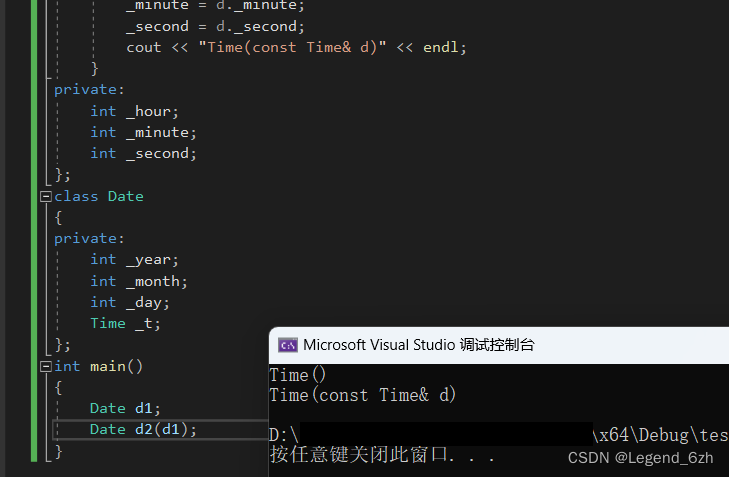
从运行结果可以看出::在编译器生成的默认拷贝构造函数中,内置类型是按照字节方式直接拷贝的,而自定义类型是调用其拷贝构造函数完成拷贝的
5.深拷贝
看下面一段代码:
#include<iostream>
using namespace std;
class Stack
{
public:
Stack(size_t capacity=5)
{
_arry = (int*)malloc(sizeof(int) * capacity);
_capacity = capacity;
_size = 0;
}
void Push(int data)
{
_arry[_size] = data;
_size++;
}
~Stack()
{
if (_arry)
{
free(_arry);
_arry = nullptr;
_size = 0;
_capacity = 0;
}
}
private:
int _size;
int _capacity;
int* _arry;
};
int main()
{
Stack s1;
s1.Push(1);
s1.Push(2);
s1.Push(3);
s1.Push(4);
Stack s2(s1);
return 0;
}
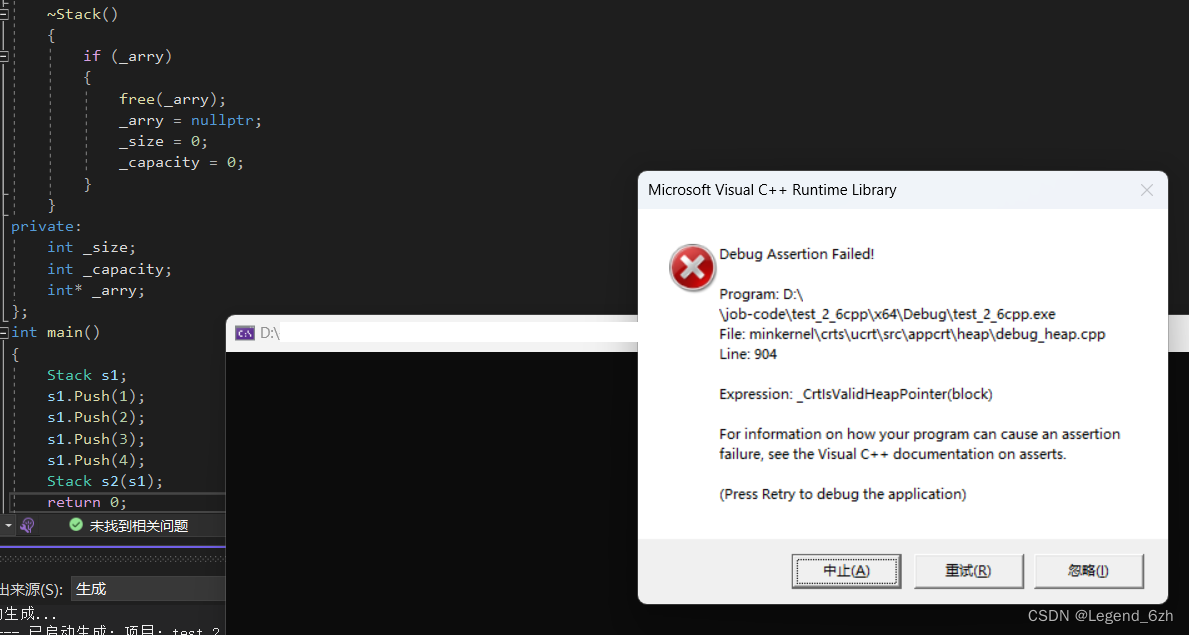
程序崩溃的原因:s2是s1的拷贝,s1的_arry和s2的_arry指向同一块空间,根据析构函数调用的顺序可知,s2的_arry空间先被释放,也就是两者共同指向的空间被释放了,此时s1成为野指针。s2的析构函数调用完以后,s1的析构函数接着被调用,一块空的空间又被释放了一次,所以此时程序崩溃。

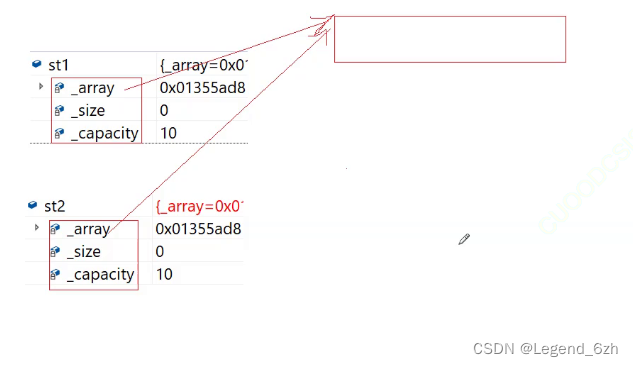
用深拷贝改写正确:
class Stack
{
public:
Stack(size_t capacity = 5)
{
_arry = (int*)malloc(sizeof(int) * capacity);
_capacity = capacity;
_size = 0;
}
Stack(const Stack&s)
{
//重新开辟一块空间:
int* tmp = (int*)malloc(sizeof(int) * s._capacity);
if (tmp == nullptr)
{
perror("malloc fail");
exit(-1);
}
memcpy(tmp, s._arry, sizeof(int) * s._size);
_arry = tmp;
_size = s._size;
_capacity = s._capacity;
}
void Push(int data)
{
_arry[_size] = data;
_size++;
}
~Stack()
{
if (_arry)
{
free(_arry);
_arry = nullptr;
_size = _capacity = 0;
}
}
private:
int _size;
int _capacity;
int* _arry;
};
int main()
{
Stack s1;
s1.Push(1);
s1.Push(2);
s1.Push(3);
s1.Push(4);
Stack s2(s1);
return 0;
}
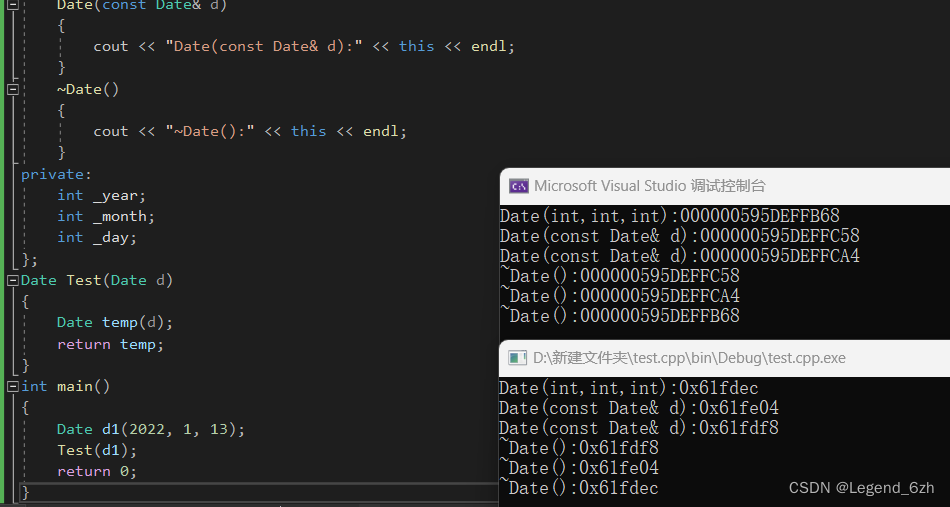
这是用两个编译器测试的结果,可以看出两个编译器调用析构函数的顺序不同。下面一张图对代码进行了调整,来测试三次调用拷贝构造函数中是否包括:对d拷贝时调用的构造函数,或返回tmp时构造临时变量而调用的构造函数。
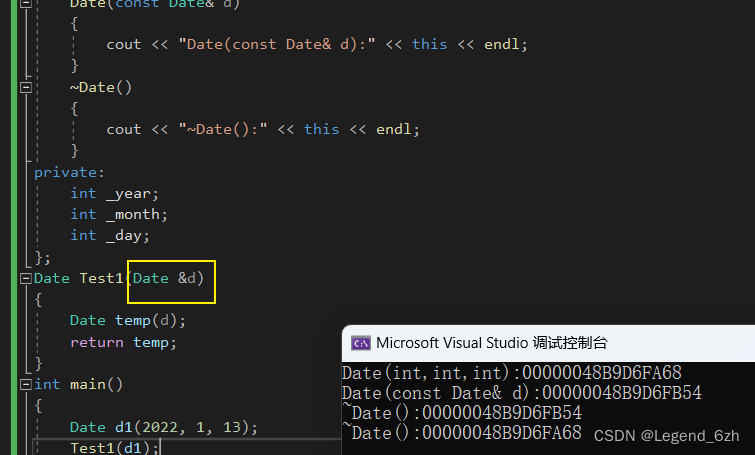
这张图的代码中,我们省去了拷贝d所需要调用构造函数的步骤,也由此可见,上一张图中第二次调用拷贝构造函数是为了拷贝d1为形参d开空间。
对于以上运行测试结果的解释,可以参考下面的图

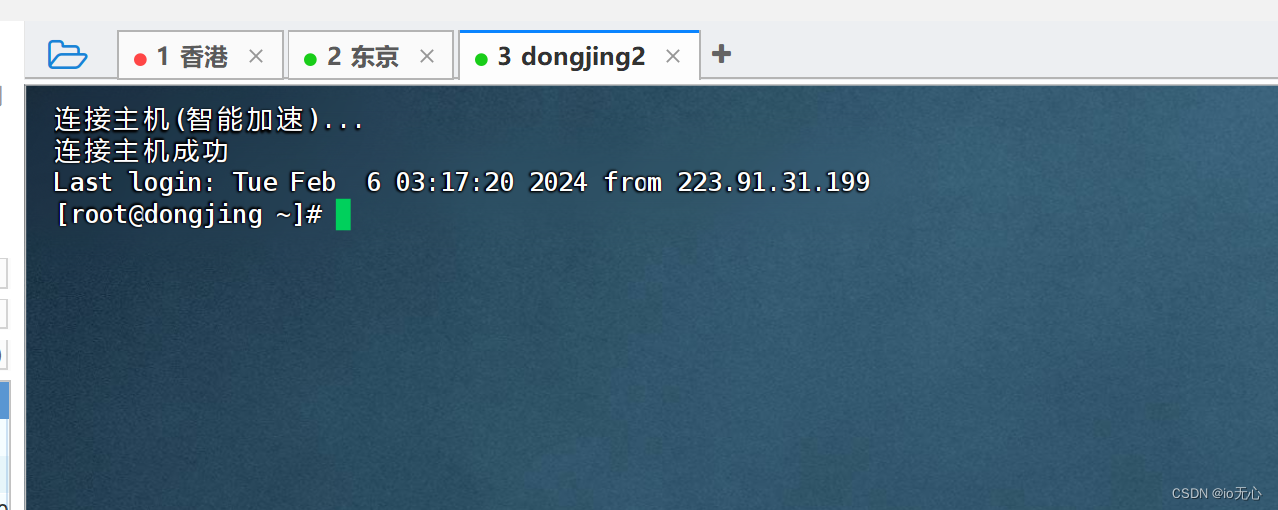


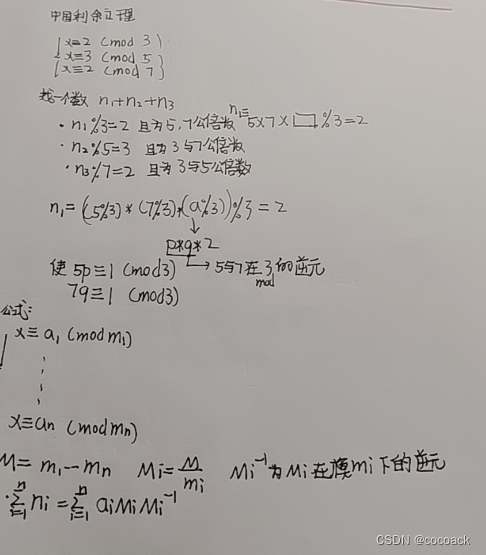


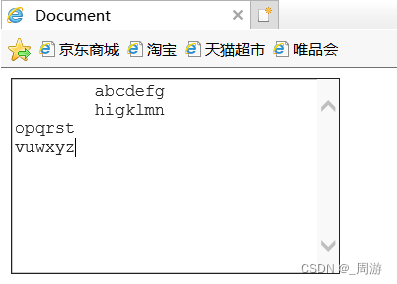

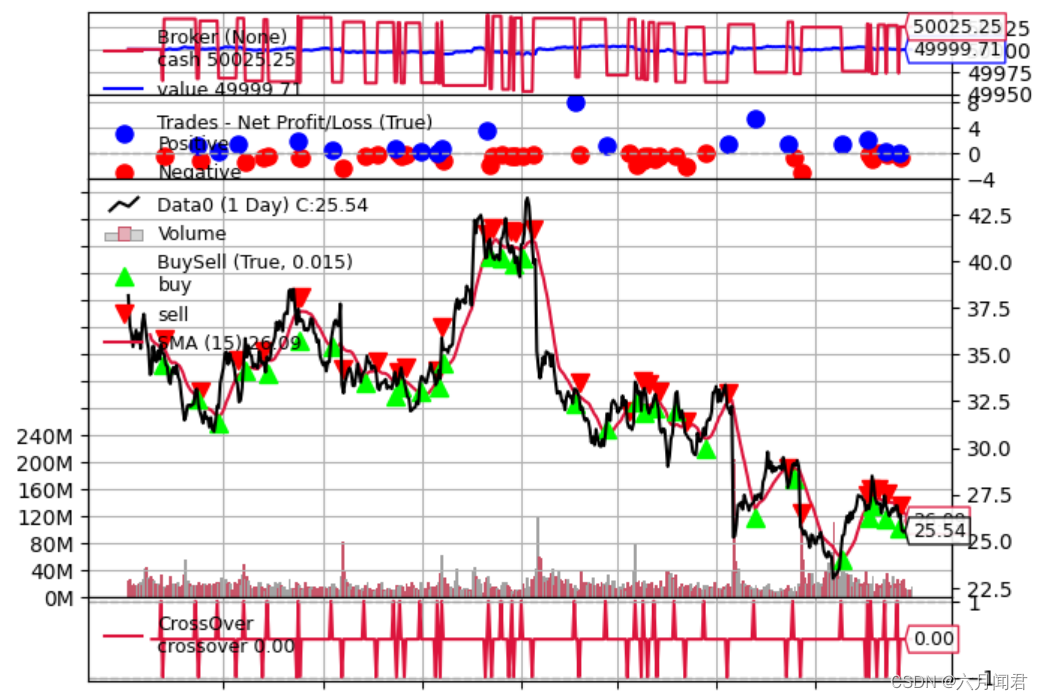




![4、解构三个重要的Pipeline(SD-Inpainting, ControlNet, AnimateDiff) [代码级手把手解析diffusers库]](https://img-blog.csdnimg.cn/direct/bb7b2185097949b1b684be616f7be720.png)





